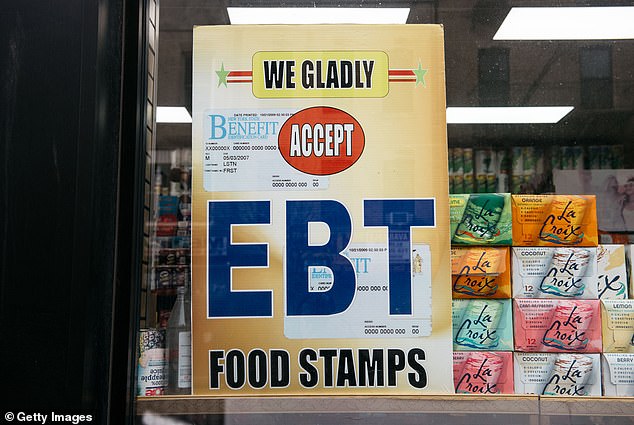SNAP benefits help low-income families buy food – here’s how to claim the food stamps in 2024 after changes in eligibility
- SNAP is the largest federal nutrition assistance program in the US
- The eligibility criterion is revised annually by the U.S. Department of Agriculture
- The Fiscal Responsibility Act, signed by Biden in June, changed the age limits
Americans are being urged to claim food stamps that can save low-income individuals and families hundreds of dollars every month.
The benefits are offered under the Supplemental Nutrition Assistance Program (SNAP) – the largest federal nutrition assistance program.
They provide essential help paying grocery bills through money sent to an “electronic benefits card,” which works like a debit card and a modern version of old-fashioned food stamps.
Last year, more than 41 million Americans received assistance through SNAP, according to the U.S. Department of Agriculture's Food and Nutrition Service, which oversees the program.
Every year, starting October 1, the eligibility criteria are updated. It was recently increased by 12.5 percent. And this year, additional changes were mandated by the Fiscal Responsibility Act (FRA), signed by the President Joe Biden in June.
A cashier in Massachusetts swipes a food stamp debit card issued by the Supplemental Nutrition Assistance Program (SNAP).

A Brooklyn grocery store displays a sign warning customers about the benefits of SNAP food stamps
Age
Historically, able-bodied people between the ages of 18 and 50 had to work 80 hours per month to qualify for SNAP benefits.
FRA legislation expanded that range to 52 in October, meaning 51- and 52-year-olds now also have to prove they're working.
According to the USDA, that will be expanded to 53- and 54-year-olds in October 2024.
There are also exceptions: these apply if you have a physical or mental disability, if you are pregnant, a veteran, homeless or 24 years or younger and in a foster family at the age of 18.
Income
To qualify for SNAP, one must earn less than a certain limit. That's generally 130 percent of the federal poverty level, which varies depending on household size.
These limits for the 48 contiguous states, DC, Guam, the Virgin Islands, Alaska and Hawaii are shown below.
The gross monthly income limit in the 48 contiguous states, DC, Guam and the Virgin Islands is $1,580.
Allocations
Cost of Living Adjustments (COLA) for 2024 increased maximum allocations in the 48 contiguous states, DC, Alaska, Guam, and the U.S. Virgin Islands.
The maximums for the 48 contiguous states and DC are shown in the table below.
The maximum allotment amount for a family of four ranges from $1,248 to $1,937 in Alaska, according to GOBankingRates.
It will be $1,434 in Guam and $1,251 in the US Virgin Islands.
Hawaii is the only place where these allotments have declined.
The minimum benefit for the 48 states and DC is $23 – the same as in 2023.
